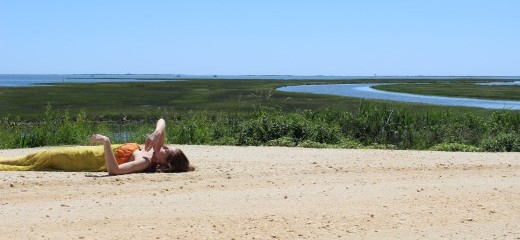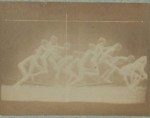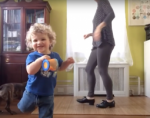
Photo: Said Johnson
Ballet in Socks
by Lynn Brooks
It was good to see Pennsylvania Ballet dancers gliding, falling, pulling, writhing, and otherwise off their verticals in
What I Learned About Outer Space, billed as “a co-creation of Pennsylvania Ballet, Curtis Institute of Music and FringeArts,” and performed at the FringeArts blackbox on Columbus Boulevard.
Performing to the part-recorded and part-live accompaniment of the Curtis Institute’s
Ensemble39, the dancers gave fully committed performances of works by three choreographers—Seattle-based
Zoe Scofield of zoe | juniper, former Forsythe collaborator
Georg Reischl, and Dutch-based Israeli artist
Itamar Serussi. Each worked with a composer—respectively
Alyssa Weinberg,
Rene Orth, and
Richard van Kruysdijk—who created new music for the works on the Fringe stage. Overall, the music seemed angsty, minimalist, and sometimes too loud.
Scofield’s program opener, IanAlexDanielMarriaSamantha struck me as a heavy-handed indictment of ballet, featuring a male dancer blindfolded and a female dancer en pointe, looking unhappy and restrained in their solos and pas de deux amid three other dancers in sexy costumes and Forsythe-style socks. The work was sharply etched, juxtaposing the angular, precise movement of the trio with the sustained balletic movements of the duo, until the blinded guy crouched at the pointe dancer’s feet to remove her shoes while she bent over to free him of his blindfold. She seemed to have a harder time releasing her balletic self than he had—he flopped and bounded readily—but she got into the drive of the group’s Cunningham-like angularities as the dance proceeded. My least favorite part was when another dancer repeatedly pushed himself through triple tours en l’air, making himself flail and fail each time. I just didn’t believe his falls.
The middle work, Reischl’s Straying Stardust, was the richest in movement invention, and the six dancers looked terrific in it, wandering restlessly around the stage at times, breaking into solos of weighty, loose-limbed movements, joining up for duets or other groupings. The dancers’ complex and lively interactions included moments of connecting with—indeed, confronting—the musicians with a directness that drew the audience’s eyes to the music-making as well as the dancing. The work had a feeling of real life irregularity, some dancers doing more than others, some interactions more puzzling, more eye-catching, more complicated; others simple, lonely, quiet. Costumes were close to everyday wear, with the ubiquitous socks instead of slippers allowing the dancers to glide, spin, rebound—articulate from tip to toe. The part-recorded and part-live music was unbalanced by the over-amplification that drowned out the fine ensemble playing to stage right.
In Operation, Serussi’s three men in loud flowered tights and one woman in black (with bright-red, Betty Boop lips) danced the confrontational, angular movement against the exposed bare walls of the theater. Were the men angry because of the flowers on their tights? I was unclear about who they were, why they glared at the audience, or what their relationships were within the quartet, but the dancers strutted through the work with unfailing energy and clarity of movement execution. Did I mention that they were wearing socks?
What I Learned About Outer Space, Pennsylvania Ballet and Curtis Institute of Music, FringeArts, September 5-7.
By Lynn Matluck Brooks
September 7, 2014







.png)


